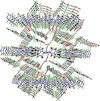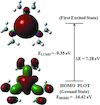issue contents
October 2020 issue

Cover illustration: The structures of five s-block metal salt forms of three disulfonated monoazo dyes are presented. The coordination behaviour of the azo ligands and the water ligands, the dimensionality of the coordination polymers and the overall packing motifs of these five structures are contrasted to those of monosulfonate monoazo congers. It is found that two of the compounds adopt similar structural types to those of monosulfonate species but that the other three structures do not. See Gardner, Kennedy, McCarney, Staunton, Stewart & Teat [Acta Cryst. (2020), C76, 972-981].
research papers










 access
access

addenda and errata



 journal menu
journal menu

























